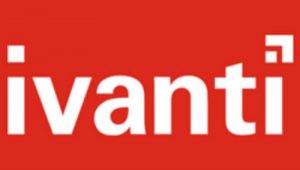
Of the various discussion points, perhaps the most significant was a ‘top 10’ developments in the last twelve months.

As Steve Daly put it: “Ivanti recognises the IT industry has faced, and faces, ever more complex challenges which have only increased over the past ten or so years. This requires Unified IT. People have more devices which means technology understanding.
“While this is good it opens the door to see IT as the department of ‘no’. It is part of Ivanti’s mission, to keep IT relevant by enabling it to respond to both end users and IT staff and enable them to focus on their jobs rather than on the tech. itself.”
Ivanti’s top 10: #s 6-10
Simon Townsend started with numbers 10 to 6, working down the list (though there was, apart from number 1, no real suggestion of relative importance):
- #10 – the introduction of the Hub; to Ivanti this redefines self-service management and goes far beyond traditional accessing a portal to obtain IT support
- #9 – the Bot with AI: these create an environment which can replace IT support people as end users help themselves (Ian Aitchison showcased an example where he recovered his password, in a secure manner, by interacting with the Bot+AI combination and without resort to speaking to any human being)
- #8 – connections: these come in two forms, those supplied in the Ivanti Marketplace (with some 250 connectors already_ or via Zapier with its 1500 connectors to non-Ivanti resources and software
- #7 – mobile: iOS and Android apps (with a consistent interface which also appears on desktops) are now available for IT Service Management (it was an example of this that Ian Aitchison used to regain his access in #9 above)
- #6 – Helpdesk Essentials: as a preconfigured, full function cloud implementation which provides self-service and support, the attraction for Ivanti customers is the swift implementation time (it runs in the Ivanti cloud) which Ivanti updates and improves without the customer needing to know.
Ivanti’s top 10: #s 5-1
Though #1 was the highlight, with an extended demo, #s 5 to 4 are as relevant:
- #5 – major UX improvements: the new user experience came first to the Essentials product but this is now rolling out over others (many in the coming 30-60 days)
- #4 – more cloud delivery: Ivanti does not expect all customers to move to the cloud but it does see cloud-delivered services complementing existing on-prem capabilities (for example from the Hub and Bot combination); Ivanti claims to have seen a 250% increase in its customers using its cloud facilities
- #3 – integration of UWM (User Workspace Management, formerly known as DesktopNow) with Environment Manager (for personalising desktops and applying contextual policy on-demand)
- #2 – improved automation (building on the RES Software workflow acquisition); this enables software components/products to work across silos and, in so doing, helps to deliver increased enterprise digitisation
- #1 – this was the imminent arrival of Asset Manager Essentials, a cloud-based discovery with asset management (including TCO and RoI) suite which Ivanti has been working on since 2016.
Asset Manager Essentials
Asset Manager Essentials will become available in the following (provisional) timescales:
- flexible design packages, for customers taking advantage of the ongoing updates and improvements enabled by the cloud: June or July 2018
- fixed design packages, for customers wishing to create their own design packages, though still in the cloud: 3Q 2018
- on-prem version: Q4 2018.
The suite includes, for example:
- a full IT Asset Management implementation (including an AMDB or Asset Management DB)
- full lifecycle management with RoI and TCO capabilities built in (this includes original asset costs plus ongoing ones – which can even include attributable indirect support costs)
- discovery (both agent-based and agentless IP sniffing – for where agent installation is not practical or allowed).
Enterprise Times: what does this mean
IT service management, as Ivanti observes, is not becoming simpler or easier, even it users are becoming more tech savvy. The menace of shadow IT is a constant complication.
Ivanti, in it’s CEO’s words, sees the requirement for Unified IT. Yet this has always existed, evolving with each turn of the tech screw. While there is nothing especially magical, or original, about Ivanti’s top 10 self-selected developments, the rational for each is obvious. They make sense.


























